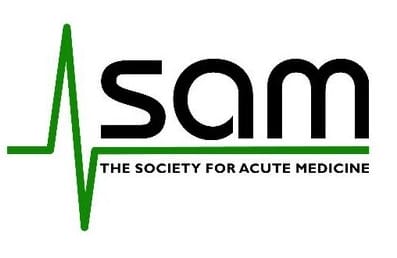Acute medicine, founded in 2000, is a specialty which delivers immediate and early specialist management of adult patients requiring urgent or emergency care for one or more of a wide range of medical conditions. Patients cared for via an Acute Medical Unit (AMU) demonstrate a reduced length of stay and mortality with no increase in readmissions.
However, as the specialty turns 25, we know that each winter in the past decade has become demonstrably worse and a continuum of often predictable perfect storms has caused significant pressures on an already struggling sytem. For any system or specialty to weather storms, it has to focus on strengthening its foundations.
The precise roles of the AMU can vary from hospital to hospital but ‘core functions’, as the ‘engine of Urgent & Emergency Care’, now include:
1. The assessment, investigation, and management of patients with an acute medical ‘need’
2. The onwards referral of patients to another appropriate speciality bed base/team
3. Continuing care of patients with an expected length of inpatient care less than 72 hours
4. Enhanced medical care (EC)
5. Same Day Emergency Care (SDEC)
6. Urgent hospital at home (H@H)
Acute medicine is a specialty, and its raison d’être should not be confused with the acute take for medicine. The comprehensive care provided by acute medicine is led by trained specialists working alongside specialist multidisciplinary colleagues.
A large part of the reduced mortality, reduced length of stay and increased patient satisfaction is derived from the collaborative MDT approach to acute patient care with an experienced and skilled team of nurses and allied healthcare professionals.
Society for Acute Medicine Benchmarking Audit (SAMBA) data over the last few years has shown a clear step change in where patients receive their first medical assessment, with progressively more acute take work conducted in the Emergency Department.
‘Post-take’ activity in the Emergency Department deprives patients of the specialist multidisciplinary resource and operational processes of an AMU. SAMBA data has shown a deterioration in the time to consultant review and work from Pioneer Data Hub has demonstrated a 37% reduction in consultant productivity when conducting a post take round in an Emergency Department footprint.
Early and timely medical review and senior decision making however is essential for patient safety, particularly given the lack of flow of patients out of Emergency Departments.
Management of the acute take requires a team “On-Take” – this can be led and supported by acute medicine physicians but it must not become the sole responsibility of acute medicine. This activity should be performed in partnership by general internal medicine (GIM) or internal medicine (IM) physicians who are taking part in the medical front door or acute take rota, or as a part of the role of acute physicians.
Due to constraints in onward flow, AMUs suffer a concentration effect, with sicker and more dependent patients, and those unable to be moved on to other specialist wards getting ‘stranded’. Patients are bypassing the AMU in favour of a downstream bed, who are then prevented from benefiting from the specialist care that an AMU provides. Moving patients to acute medical areas – AMU, EC and SDEC, allows the opportunity for more rapid diagnosis, treatment and early discharge. The concentrated skills and resources in the AMU that demonstrably improves the quality of care of these patients benefits the functioning of the hospital as a whole.
Acute medical units (AMUs) are rich learning environments for a wide range of health professionals and students. High-quality teaching and learning have a direct impact on patient safety, quality of care, and the experiences of trainees.6 At all times, including times of high operational pressures, it is important to factor in and protect time for experiential ‘work-based’ training incorporating point of care ultrasound as well as ‘classroom-based’ training and simulation. The quick-pace, variety of clinical presentations and consultant/specialist presence on AMU lends itself to be a rich environment for investment in education.
To enable modernisation and transformation, the AMU must also not only partake but should lead in quality and service improvement, innovation and research. The Society for Acute Medicine’s key ambition is to promote and advance the field of acute medicine. To make this ambition real, we must make acute medicine a great place to work in, and to deliver research in.
Never has the need been greater to re-establish and strengthen the foundations from which Acute Medicine can play its vital role within urgent and emergency care, to continue to help the whole system weather the storms. It is essential that the recommendations are followed at all times including when the system is in the highest operational pressure.
The Society for Acute Medicine will continue to be involved in any decisions nationally regarding Acute Medicine standards.
The position statement with the 25 Recommendations can be found via the link below and on our Policy hub. The position statement is supported by the Royal College of Physicians London and Getting It Right First Time (GIRFT).
